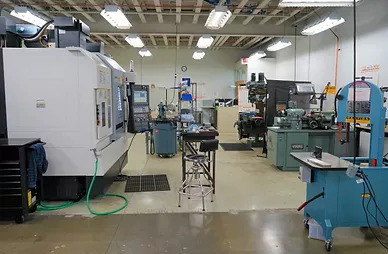Introduction: Advancing Medical Device Design Through Prototyping
The development of medical devices is a complex, multifaceted process that requires careful planning, precision, and adaptability. A successful medical device must meet stringent safety and usability requirements while also catering to user needs effectively. The fusion of medical device design and prototype development services makes it possible to translate medical concepts into practical, life-saving products.
In this article, we will explore how medical device design and prototype development services are transforming healthcare technology and what role these practices play in ensuring the quality and effectiveness of modern medical solutions.
Understanding the Medical Device Design Process
Medical device design is the foundation of healthcare innovation. It is a multidisciplinary approach that combines engineering, regulatory compliance, and user experience to create devices that are both safe and effective. This process requires a detailed understanding of medical needs, usability, manufacturing capabilities, and the regulatory landscape.
1. Early-Stage Conceptualization
The medical device design process begins with the identification of a specific healthcare problem. This could range from improving diagnostic efficiency to facilitating patient monitoring or delivering treatment. During the conceptualization phase, designers generate various ideas and models based on existing needs in healthcare settings.
Market research, end-user surveys, and discussions with healthcare professionals are essential at this stage. Gathering insights from actual users—doctors, nurses, and patients—helps to identify challenges and craft appropriate solutions. Conceptualization also involves the preparation of technical specifications, ensuring that the device is not only effective but also aligns with medical standards.
2. Designing for Usability and Safety
Once a concept has been formulated, detailed design work begins. Medical device design requires special attention to the end-user experience, including ergonomics, safety features, and ease of operation. This process involves extensive documentation, technical drawings, and simulations.
Ensuring compliance with regulatory guidelines is also a major part of this phase. Designers must consider international regulations such as FDA guidelines or CE marking, depending on the markets in which they plan to distribute their devices. Safety protocols are embedded into every aspect of the design, guaranteeing that the device is appropriate for medical use.
Prototype Development Services: Bridging the Gap from Concept to Reality
3. The Importance of Prototyping in Medical Device Design
Prototype development services play a crucial role in transforming a theoretical design into a tangible product. This stage allows designers to create physical models that can be evaluated, refined, and tested for usability and functionality.
Prototypes can be either high-fidelity (which closely mimic the final product) or low-fidelity (basic models used for initial testing). Creating these prototypes is key to identifying any design issues, conducting initial tests, and gathering feedback from end-users. Prototype development services provide an opportunity to make changes and improvements before moving to the production phase, ensuring better outcomes in terms of performance and safety.
4. Functional Testing and Design Validation
After developing a prototype, functional testing is essential. This testing stage focuses on evaluating the performance of the prototype in real-world scenarios. Does the device work as expected? Is it safe and efficient for the user? Does it meet the intended use-case requirements?
Using prototype development services, teams conduct usability tests involving healthcare professionals and, where applicable, patients. This iterative process helps to identify potential challenges and make any necessary modifications. Each iteration of the prototype is designed to bring the medical device closer to the final, market-ready version.
The Benefits of Medical Device Design and Prototype Development Services
Enhancing Innovation in Medical Technology
Medical innovation is often about trial and error. Medical device design provides a structured framework for innovation, while prototype development services enable creators to learn from each iteration. Testing and refining prototypes make it possible to innovate effectively, leading to breakthroughs in healthcare technology.
For example, advancements in minimally invasive surgery have been largely driven by innovative medical devices like robotic-assisted surgery systems. These devices went through extensive design and prototyping phases to ensure safety, precision, and usability.
Meeting Regulatory and Market Requirements
Navigating the regulatory landscape can be challenging for developers of medical devices. There are strict guidelines in place to ensure that only safe and effective devices are allowed in healthcare settings. The design and prototyping stages serve as an important check to confirm compliance with these guidelines.
Companies offering prototype development services, like Quartus, help innovators in navigating regulatory complexities by providing prototypes that demonstrate compliance. These models can be used for preclinical testing and meeting submission requirements for bodies such as the FDA or EMA.
Reducing Risks and Costs
One of the key advantages of prototype development services is the ability to mitigate risks early in the process. Identifying potential design flaws during the prototyping phase significantly reduces the risk of costly errors during mass production. By identifying and resolving issues before they escalate, developers can save time and money.
Moreover, building prototypes enables a comprehensive analysis of the materials used, the manufacturability of the device, and the user experience. All of these elements help to prevent costly reworks and design modifications after production has already begun.
Key Steps for Effective Medical Device Design and Prototype Development
Define the Problem and Gather Insights
Start by defining the healthcare challenge you are trying to solve. Gather insights from healthcare professionals, patients, and market research. This will help you to create a well-informed medical device design that addresses a real problem effectively.
Design with the User in Mind
User-centric design is key in the medical field. Consider the user experience, especially in terms of ease of use, accessibility, and comfort. User feedback is instrumental in making critical design decisions during the prototyping phase.
Iterate and Test Thoroughly
Prototyping isn’t a one-time activity; it’s an iterative process. Each prototype should undergo rigorous testing, and adjustments should be made based on the feedback. This cycle of prototyping and testing helps to refine the final product, ensuring its effectiveness and safety.
Conclusion
The combination of medical device design and prototype development services is at the heart of healthcare innovation. These processes are vital for transforming a promising idea into a fully functional medical product that improves patient outcomes and healthcare practices. From the initial concept to rigorous testing, each step plays a pivotal role in shaping a successful medical device.
Working with experienced professionals, such as those at Quartus, can be highly beneficial in navigating the complexities of medical device design and prototype development services. With the right expertise, resources, and an iterative approach, you can create medical devices that make a genuine impact in the healthcare landscape.
Key Takeaways:
- Medical device design involves conceptualizing, creating, and refining medical products to ensure safety, usability, and compliance.
- Prototype development services play a critical role in transforming conceptual designs into practical models for testing and validation.
- Effective medical device design relies on iteration, thorough testing, and a user-centric approach to ensure both safety and functionality.
FAQs
1. Why is prototyping important in medical device design?
Prototyping allows developers to create tangible models of their medical device, enabling them to identify flaws, test functionality, and gather user feedback before mass production, ultimately ensuring a more effective and safe product.
2. What role do prototype development services play in reducing risk?
Prototype development services help reduce risks by allowing for early identification of potential flaws or issues. By resolving these problems during the prototyping phase, developers can avoid costly reworks and enhance the reliability of the final product.
3. How can a company like Quartus assist with medical device development?
Quartus offers specialized medical device design and prototype development services that help innovators navigate the complexities of the design process, ensuring compliance, effectiveness, and successful market entry.




